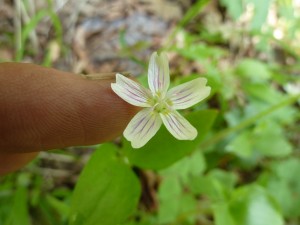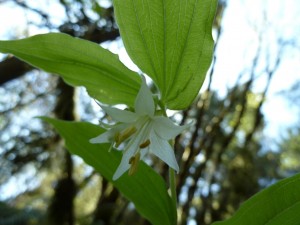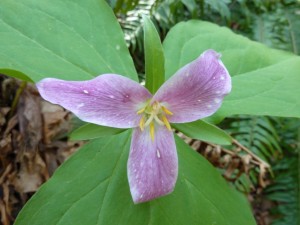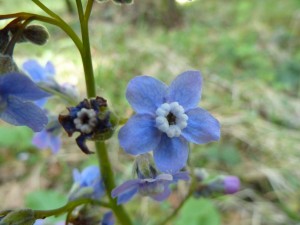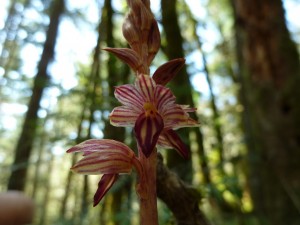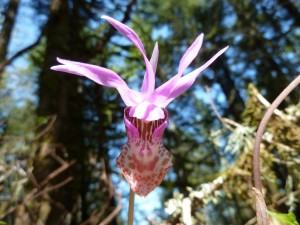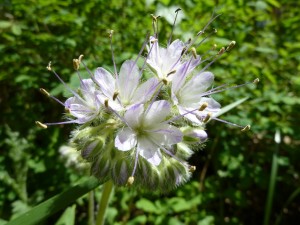We had 80 degrees today, almost a record high and the third in a string of summerlike beautiful clear days. The solar tank reached 161º yesterday, enough for about 20-25 minutes of showering. Our bees were out in force, pollinating our pear blossoms and just-now-opening apple blossoms. We are planning to till part of the garden tomorrow evening, ahead of the next batch of rain. Wednesday on will bring more springlike weather, and a continuation of our wetter-than-usual pattern.
Yesterday (Earth Day) we joined Kelly and Rachael for a hike on a new (for me) trail behind Bald Hill, rumored to be good for wildflowers. That proved to be very true, and it was also good for birds – singing yellow warblers, acorn woodpeckers, a gray jay, and a Bewick’s wren, among others.
Our species of trillium turns pink to purple as the flowers age. We found these bluebuttons right across the trail from a patch of Calypso orchids. At Kelly’s suggestion, we discovered that fairyslippers have a most delicious fragrance, noticeable only at close range.
There are several species of parasitic orchids in the forests out here, of which the striped coralroot is the most beautiful. They have no leaves, no green parts whatsoever, and appear as flower stalks in spring. They obtain energy by feeding off the roots of other plants.
I took a lot of good photos of Calypsos, and it was hard to choose one for the blog. The photo above is a good one to view full-screen. I’m still very much a fan of the Lumix camera, though it now has some dust on internal lenses that appears as specks in some shots.
Finally, we have the western version of waterleaf, one of the spring flowers I grew up with blooming in early May behind Valley House. Here it is not so common, and found in wet areas near streams.

